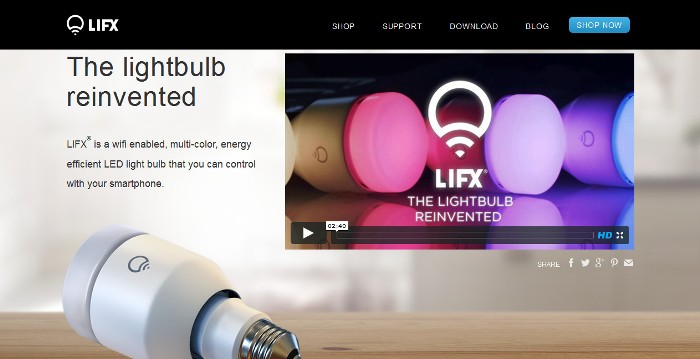Make Your Own Smart Home. It’s Not as Complicated and Expensive as You Think
![By Jan Prucha (Own work) [CC-BY-SA-3.0 (http://creativecommons.org/licenses/by-sa/3.0) or GFDL (http://www.gnu.org/copyleft/fdl.html)], via Wikimedia Commons](https://techtheday.com/wp-content/uploads/2014/07/home-automation-control-panel.jpg)
By Jan Prucha (Own work) [CC-BY-SA-3.0 (http://creativecommons.org/licenses/by-sa/3.0) or GFDL (http://www.gnu.org/copyleft/fdl.html)], via Wikimedia Commons
The idea of making smart things has quickly spread from phones to various other items. From smartphones to smart appliances, homes can now also be made “smart” by incorporating the advantages of technology in them. What’s great about all of this idea of making things “smart” is that it can be done without buying a pre-built “smart home” or by specifically hiring a knowledgeable contractor to do it.
Yes, you can have your own smart home by getting or installing the things you need by yourself. A smart home is basically just a house that makes use of home automation solutions to provide convenience and comfort for its residents. The idea is to make things easier and faster to use. It involves the use of computers and information technology to enable (mostly) wireless access, interaction, and control. It shouldn’t be difficult finding the things you need to have your very own smartphone.
The following are some of the things you can get to convert your ordinary home into a smart home. These emphasize practicality, not the capricious aspect of going for automation.
1. Smart Lighting – Smart light bulbs or lamps are already quite common nowadays. They can be remotely controlled and programmed. They can connect to the Internet, through your Wi-Fi router, so you can turn them on or off even when you’re away from home. Controlling them can be through your computer or smartphone. Most of them make use of LED technology so they are power efficient and long-lasting. You can use your smart lamps in conjunction with your home cameras to make sure that there’s enough light to see what’s happening inside your house if your remote camera struggles to see anything.
2. Smart Home Telephone – Almost everyone in the household may already have their respective smartphones. The traditional telephone could use some upgrade. There are companies that offer telephones that come with a tablet. In the Philippines, for instance, one major telco offers PLDT Home Telpad Plan, which incorporates a quad-core Android tablet in the setup. Having a tablet that is accessible for all household members is a good start in implementing a smart home. It can facilitate connection for other smart devices or serve as a hub for controlling other devices within the house. It can even serve as the home remote camera by simply using readily available popular apps like Airdroid.
3. Home-Control Networking – Companies like Insteon offer great products for those who want to start in achieving a smart home. Insteon offers a wireless home-control solution that comes with both hardware and software ready to address most residential needs. It enables the wireless control and automation of irrigation, lighting, HVAC, and most appliances within a home.
4. Video Doorbell – This is a standard for most high-end condominiums in many Asian countries including Japan, South Korea, and Taiwan. They usually come with touch controls. Their main use is for identifying the person knocking on the door. However, there are models that can be used to communicate with authorities in emergency cases. Some can also integrate with digital locks to ensure security.
5. Smart Dishwasher – There are dishwashers like the Bosch 800 Plus Series. It features a flexible third rack that handles items most dishwashers are unable to properly clean. It has a touch control display in full color that provides status and maintenance updates.
6. Smart Washer and Dryer – Laundry work is one of the things many would want to avoid. To make your home a place of utter convenience, why not consider having something similar to LG’s SmartThinQ washer and dryer? This machine comes with an intelligent system that detects when power consumption is low in an area (not just in your household) so that it can operate at such time when power rates are lower. It can also be controlled and managed using a smartphone.
7. Water Use Reminder – To help you control your water consumption you can get something like the Waterpebble, a small device that flashes lights to indicate when you should stop showering or using water for other purposes. It bases its reminders on your previous usage patterns and also gradually shortens the time it takes to flash the red light so you can save water without you realizing it, without you noticing any difference in your water usage.
8. Smart Thermostat – The Nest thermostat is one great example of a smart thermostat. It is a sleek-looking device that learns your temperature control needs. Just install it and use it. No programming or configuration required. It makes it easy to ensure that you are having the right temperature you want while trying to save on your heating and cooling expenses.
![By Amanitamano (Own work) [CC-BY-SA-3.0 (http://creativecommons.org/licenses/by-sa/3.0)], via Wikimedia Commons](https://techtheday.com/wp-content/uploads/2014/07/Nest-Thermostat.jpg)
By Amanitamano (Own work) [CC-BY-SA-3.0 (http://creativecommons.org/licenses/by-sa/3.0)], via Wikimedia Commons
9. Automated Sprinkler System – If you have a garden, it will also be great to have an automatic sprinkler system or something you can control remotely. These systems usually require some time for the installation. If you can’t do the installation yourself, the companies selling them can usually install them for you.
These are just some of the smart devices you can get to convert your typical house into a smart home. They’re not really that expensive and they can provide a good equivalent to what pre-built smart homes can offer. You don’t have to hire a contractor to have everything installed into your home. Just be sure that you are trying to address your needs and not simply doing whimsical installations that don’t bring any real convenience. Also, don’t forget that to have all of these devices working together and to ensure smart operation, you need Wi-Fi connection within your home.
